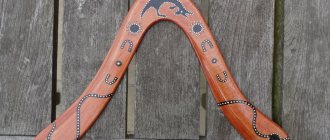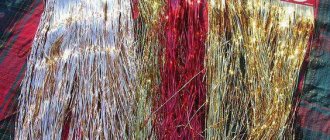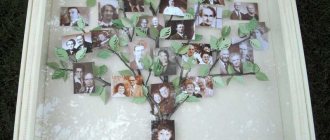A soft, comfortable and original handmade ottoman will not leave anyone indifferent. It is comfortable to sit, looks beautiful, and fits perfectly into the design of any room. It is made from materials that are available in every home, which plays an important role when calculating its cost. You can name a large number of advantages of such ottomans. But the main thing is your work, which will give you pleasure. A wide variety of ottomans made from scrap materials makes you think about choosing an option.
Types of ottomans
Poufs can be of completely different shapes - rectangular, square, round and triangular.
- The upholstery for soft stools in production is also used in different ways - jacquard, velor, tapestry, leatherette, flock, microfiber, chenille.
- At home, you can use used fabric: Old curtains, blankets, jackets, etc.
Models are made with legs, on wheels or without them. The sizes can be completely different - from miniature ottomans to large and wide full-fledged “chairs” or “sofas” without a back.
Such upholstered furniture can be used anywhere. The pouf is placed in the living room next to the sofa so that you can comfortably stretch your legs while relaxing. Or in the hallway to sit down while putting on your shoes. In the kitchen or in any other room - for additional seating.
Poufs made with your own hands in the country are irreplaceable. It is not cost-effective to furnish a small garden house with new furniture, so ideas from improvised means are used.
Tools for creating an ottoman
To make your own pouf at home, you need to prepare the following tools:
- Screwdriver with different attachments;
- Self-tapping screws and self-tapping screws;
- Glue gun;
- Sandpaper;
- Jigsaw or saw;
- Furniture stapler.
Materials for homemade products can be very different - plastic bottles, old boxes and pallets, sheets of plywood, fiberboard, plastic containers and others.
Ottoman from a drawer
A wonderful stool on wheels with a soft seat cover can be made for a summer house or garden, or even for the home (in a hallway with a marine theme, for example).
To work, in addition to tools, you will need one wooden box (after storing food), four wheels, canopies for the lid, a piece of plywood, white paint for wooden products, a piece of foam rubber and padding polyester, and a piece from an old curtain.
Work process:
- The box must be prepared: cleaned of dirt and sanded. If there are protruding nails, remove them with a pry and carefully nail them again.
- Attach four wheels to the bottom with self-tapping screws (purchase in a store or unscrew from an unnecessary item).
- Make two holes on the two smaller sides with the same distance from each other. This is for rope handles.
- Take a can of white paint and paint the outside of the box (you don’t have to touch the bottom and inside).
- Leave the product to dry.
- Thread a piece of rope through the side holes and staple it inside.
- From plywood (used or new furniture) cut a rectangle of the size corresponding to the box - for the lid.
- Glue a piece of foam rubber onto the plywood, cut off the excess.
- Take upholstery fabric - a piece of curtain and wrap it around the future seat cover, securing the edges from the inside with a stapler or glue.
- For the inner bag, make a pattern in the shape of a three-dimensional cross from lining fabric (you can use almost any fabric or upholstery fabric from which the lid is made), taking measurements first and leaving 1.5 centimeters at the edges for hemming.
- Sew all four corners and turn the bag right side out. Place it in the box and secure it around the edges with a stapler.
- Cover another piece of plywood identical in size with fabric and staple it to the inside of the pouf lid.
- Secure the mechanism for raising the seat: screw small canopies onto the box and plywood with foam rubber using small screws. Poof is ready!
Various small items are stored in the ottoman. The presence of wheels allows you to easily move the pouf throughout the house or throughout the garden terrace.
Features of the material
When making an ottoman with a lid, chipboard and textiles will be used. It is chipboard that is most often used in the manufacture of stylish, practical and functional furniture items . Its advantages include:
- strength and reliability;
- wide range of textures and colors;
- ease of processing;
- affordable cost;
- long service life;
- ease of care.
As for the upholstery material, you can choose any fabric.:
- Skin. It is distinguished by its elegant appearance, practicality and durability.
- Leatherette. This material pleases with its affordable cost, good technical characteristics and ease of care.
- Velours. This fabric is pleasant to the touch and has a noble appearance.
Advice : depending on personal preferences and financial capabilities, you can also upholster the ottoman with chintz, cotton, chenille or jacquard.
Bottle ottoman
To quickly and easily make a pouf for a country house, you need to take 23 empty plastic bottles. Connect them together using tape (in other words, wrap them).
- Cut two circles from a sheet of plywood with a diameter corresponding approximately to the diameter of the bottles assembled together (measured from below).
- Glue two circles to the bottles on top and bottom, secure with small screws.
- From old artificial leather, cut out two circles (slightly larger than plywood) and a rectangle around the circumference of the bottles. Sew a cover from the pattern.
If you don’t have a sewing machine, you can baste it by hand or glue the material to the base. That's all! The country ottoman is ready.
Anyone who doesn’t have enough chairs while relaxing in the garden at a barbecue can sit on it. Or put an impromptu stool on the terrace in front of the house.
Preparation time
If you strictly follow the design of the product, then in just a few hours you can make an incredibly interesting model of a banquette that will fit perfectly into the interior of any room. The manufacturing process is so simple and unpretentious that any housewife can do this work. The main thing is to be patient and have some free time.
With proper preparation and a positive attitude, you can create a unique interior detail alone . However, the process will go much faster and more fun if you involve all family members. In any case, before starting work, you first need to prepare everything and make sure that not a single detail has been overlooked. At the same time, it is very important that all the necessary materials and tools are at hand - this will significantly save time and help you not to be distracted by searching for the necessary equipment.
Bucket ottoman
An unusual pouf with a soft seat can be made from an ordinary plastic bucket.
To work you will need:
- Large plastic bucket (after mayonnaise or paint);
- Shovel handle;
- Jigsaw or saw;
- Screwdriver and screws;
- Faux fur (formerly plaid);
- Foam rubber and synthetic winterizer - according to the cut;
- PVA carpentry glue.
Process of creation:
- Remove the handle from the bucket and turn the bucket upside down.
- Cut the cutting into 3 parts (approximately 45 cm each).
- Glue the legs inside the bucket at the same distance from each other and secure with screws on the outside.
- Measure the required diameter of the bottom of the bucket and cut a circle from foam rubber. Glue a piece of foam rubber to the bottom of the bucket.
- Cut the required size of padding polyester and wrap it around the bucket (place the fabric on glue).
- From an old blanket (imitation faux fur), cut out a rectangle and a circle (the size of the bucket). Sew a cover and pull it over the bucket.
- Fold the fabric inward from the wrong side.
- Cut out a suitable circle from cardboard, wrap it with any lining fabric and attach it to the inside of the ottoman, covering the empty space of the bucket. Poof is ready!
Making a frame
To create the basis of our design, you will need to prepare everything you need:
- actual plastic bottles (preferably two-liter bottles) in quantities of up to 40 pieces;
- a large roll of transparent tape, 5 cm wide;
- stationery knife.
Many will note that the vast majority of video lessons use a significantly smaller amount of containers. The design considered here will be much stronger and more reliable. And, in the end, there is no point in saving on garbage.
Before you start work, decide for yourself:
- what shape will your new ottoman be?
- where are you going to use it.
It's really not difficult to build it:
- rectangular;
- oval;
- round;
- square.
In theory, nothing prevents you from making a whole banquette. The classic version is a cubic low stool, covered on all sides with fabric and foam rubber. We will look at it in more detail.
So:
- take 32 empty bottles and arrange them in pairs;
- We cut off the top of every second one (by about a third);
- Insert a whole one into the resulting sleeve (necessarily with a stopper).
By doing this, we dramatically increase the strength of the blanks. Next, we wrap each individual element with fabric (for example, panels cut from old T-shirts, or simply pull on warm tights) - this will save you from annoying squeaking. The fabric is fixed with tape.
Now it's time to create modules. 4 reinforced bottles are wound in a row with adhesive tape. They are connected together in a special way:
- the first and third neck up;
- the second and fourth with the cork down.
In this way, 4 elements are constructed. They are put together taking into account that the lids should be staggered. The base is fastened without sparing adhesive tape. To strengthen the structure, you should attach each bottle to the row separately, each time wrapping it with tape to the others.
A cylindrical stool is made in the same way, but the individual elements are fixed to the central container in concentric circles.
You can create an oval pouf if you put 2 bottles in the middle.
Round ottomans
Homemade ottomans are also made in a round shape from plywood and a flexible fiberboard sheet, fastening all parts using a screwdriver, self-tapping screws and a stapler, and then upholstering them with any fabric. You can attach wheels or legs to the bottom, which can be straight or oblique (three pieces).
If desired, they can be made with an internal drawer and lid, attaching canopies to the frame and seat.
Handmade furniture looks very original, original and creative. By choosing the shape, size and color scheme of the upholstery, you can make a pouf that will suit any interior design of your home or cottage.
A brief excursion into history
An ottoman or ottoman is a low item that belongs to the category of upholstered furniture that is designed for people to sit. It is also sometimes used as a footstool, or may even just serve as a decoration for the room. The shapes of the products are varied, but most often there are square and round ottomans, completely covered with upholstery fabric, except perhaps for the legs, which are usually made of wood.
Vintage delightful ottoman
Before we talk about how to make such a piece of furniture ourselves, let's study the history of this product. So, the history of the ottoman and furniture in general are very closely intertwined. The very first ottomans appeared in Ancient Egypt, and a little later they began to be used in rich homes in Greece and Rome.
English ottoman stand
Over the many years that ottomans have existed, they have changed dramatically. Previously, leather, fur, wood, and expensive fabrics were used to make poufs. Sometimes the pouf could have a beautiful design - such beautiful products can still be seen in museums. But gradually the popularity of richly decorated poufs faded away (around the Middle Ages). This was due to the promotion of an ascetic lifestyle, which the Catholic Church was actively involved in. Rougher and harder seating options began to appear, and sometimes people even sat on simple benches or chests. Separate chairs were only used by the nobility.
Antique ottoman with legs
Around the 18th century, beautifully decorated upholstered poufs came back into use in Europe. And this was facilitated by the fact that aristocrats could afford to decorate their homes with exquisite products, and asceticism faded into the background. Elegant poufs became popular among ladies who did not have to wrinkle their luxurious dresses to sit on them. So the ottoman was a frequent “guest” at the ball.
The pouf in its modern form, as we know it now, appeared around the end of the 19th century in France. And since then it has been and remains a popular piece of furniture.
You can make a pouf with your own hands quite simply
On a note! In Europe, this piece of furniture is called a pouf, but in Russia the more affectionate word “ottoman” has taken root.











